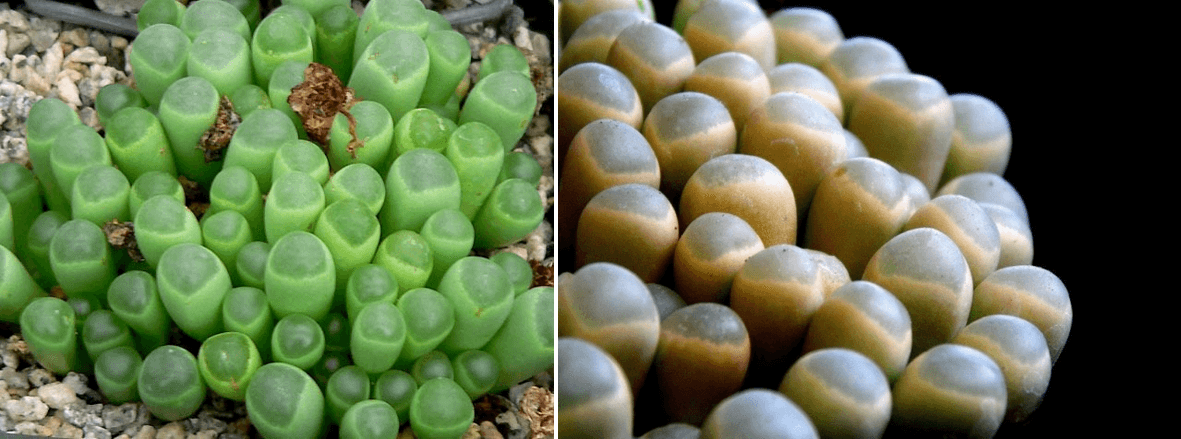Greetings Readers,
For the theme of light, I am going to discuss how nature harvests light. We have discussed in one of our previous articles, how polar bears use light reflection and scattering (similar to fiber optics) for light absorption, but sophisticated light harvesting strategies this mechanism is not only limited to animals.
Light Harvesting in Polar Bears
Plants have many techniques for light harvesting. As a matter of fact plants use only 0.1 percent of solar energy; not because they cannot, but the conversion of incident light to absorbed light is very efficient. Plants need light for photosynthesis and leaves are the solar collectors of plants. One such example which was also discussed in the previous article is Fenestraria aurantiaca (also known as window plant). Window plant has a similar working principle to fiber optics, it can be found in the deserts of South Africa, they are nearly buried in the sand (1). The tip of every leaf is transparent: Light enters here and can travel down the leaf (1). The plant shown in figure 1, has only a small part of it exposed to the light. The plant absorbs light through an opening at the top, hence the name ‚window plant‘. Being mostly buried under soil enables Fenestraria aurantiaca has to protect itself from water loss and grazing animals.

Figure 1: Fenestraria aurantiaca
Fenestraria aurantiaca has specialized adaptations to deal with heat, light and aridity (2). The window at the top of the plant is actually a light transparent membrane, light can protrude through this membrane to reach the lower region of the leave. In a detailed microscopy, it was found that the membrane works as a lens and light from a 90° angle is directed into the leave (2). The membrane also functions as a light filter, which blocks up to 90 % of the visible light. As the wavelength rises, the light filter gets more transparent and the transparency reaches around 90 % under the right conditions. The dome shaped window facilitates light harvesting independent of the position of the sun. The directed sunlight is used by edge cells for photosynthesis. The heat of the incoming light warms up the water retaining window cells and is quickly re-emitted (1), this also provides a self- cooling effect to the plant.
The working principle of window plant have already being used for many technical problems in the field of photovoltaics. Solutions have been proposed to apply this principle to photovoltaics to solve overheating and light concentration issues in solar cells. A similar system for solar cells would enable them to be cooler along with structural safe guard as it its buried underground.

Figure 2: a. Abstracted from the build-concept of the stone plant Frithia pulchra (Adapted from Tributsch 1995): b. Concept sketch for a desert building.
The mechanisms from Fenestraria aurantiaca not only inspire cooling and light collections but, could also provide a feasible solution for architecture design. The concept of the window plant can be adapted for building in deserts and very hot regions. The light collection combined with cooling effect could open new doors to building design. Such a concept was adapted by one of our former professors is ’shown in figure 2.
The concept of light collectors has been in existence for a long time and is constantly optimized. The fact that architectural design itself could provides light collection and cooling, without the need of additional systems, could result in sustainable building design.
To conclude the principle can also be applied to high rise buildings, where the light collection could enable indoor vegetation and also reduce the need of lighting systems during the day. The membrane/filter on top of the window plant could itself could provide groundwork for a filer. The water molecules in this membrane could not only provide light filtration, but also a cooling effect; especially in building with huge glass facades.
References:
-
Pohl, Göran, and Werner Nachtigall. Biomimetics for Architecture & Design: Nature-Analogies-Technology. Springer, 2015.
-
Schäfer, Immanuel. „Biomimetics in energy systems: Light transmission in the window plant Fenestraria aurantiaca as inspiration for new solutions in the technical world.“ Advances in Science and Technology. Vol. 84. Trans Tech Publications, 2013.
Figures:
-
Left: By Stan Shebs, CC BY-SA 3.0, https://commons.wikimedia.org/w/index.php?curid=928310; right: Photo by: Diego Armentano
-
https://commons.wikimedia.org/wiki/File:Fenestraria_aurantica_1.jpg




l loved your article. Haven’t thought about light harvesting since I did a presentation on Cyanobacteria in graduate school. The way that 90 degree angle light is directed into the plant reminded me of flow cytometry, where 90 degree light scattering is used to measure the complexity of the(white) blood cell interior, as opposed to the forward angle light scatter wfhich is used to measure cell size.
Thank you for your feedback 🙂 To be honest, I was not aware of flow cytometry. Having done some research on this topic, gave me some ideas of how such a system could inspire a light distribution system, which could transport light even to the darkest parts of any building.
Thanks to you I now have a different perspective on this topic.
wish you a nice weekend 🙂